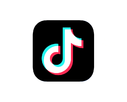Physiotherapeutic exercises
Neurogenic scoliosis
Physiotherapist Melli explains to you what neurogenic scoliosis is and what exercises you can do at home:
- breathing exercises
- positioning options
- treatment options for tissue strength
The exercises are suitable for all scoliosis types with neurological underlying disease.
Physiotherapeutic exercises
Idiopathic scoliosis
The Adams test, also known as the preventive test, is used by physicians, therapists and orthopedic technicians to diagnose and monitor scoliosis. But you can also use the test to check if you have scoliosis. Because the Adams test also shows exactly where the scoliosis is going, it helps you to make sure you’re training the right side.
The lateral displacement and rotation of the spine not only changes the line of your spine, but also the entire shape of the chest. The chest includes the lungs, which would like to unfold symmetrically and evenly when breathing. Especially when the vertebral bodies are rotated, parts of the lungs get far too little space and other parts get far too much space in the chest. This reduces the function of the lungs and forces them to work in a very unbalanced way. Through corrective breathing, we intentionally aerate the lungs, which have too little space to expand, and derotate the chest from the inside.
In the first corset in particular, it is possible that feelings of tightness and shortness of breath may occur when making minor efforts. This is quite normal because the corset prevents the usual breathing direction and deliberately directs it into a less active part of the lungs. Physiotherapist Melli shows you how to optimally train your lungs in the corset.
A shoulder curvature is above the thoracic curve, just below the cervical spine. Physiotherapist Melli shows you what exercise you can do at home.
Each scoliosis has a primary curvature – the curvature that is the largest, most influential, and most in need of correction. In the T pattern, the primary curvature is in the thoracic spine. Physiotherapist Melli explains to you the exercise “Shoulder counter-traction in ordered side position” with which you can upright your scoliosis.
In the L pattern, the primary curvature is in the lumbar spine. Physiotherapist Melli shows you two exercises you can copy at home.
Hyper means “too much” and kyphosis is an outwardly rounded spine (seen from the side). Hyperkyphosis thus refers to a thoracic spine that is too round, also known as hunchback.
A hunchback tends to become firmer and stiffer in the round position. Muscular training can only take effect if mobilization training takes place at the same time in order to also be able to guarantee the path to extension. In this video, Melli shows you two helpful exercises.
Hypo means “too little” and kyphosis is an outwardly rounded spine (seen from the side). Hypokyphosis therefore refers to a thoracic spine that is too flat, also called a flat back.
The healthy, curved spine works like a spring. The flatter the back, the smaller the spring travel and the higher the axial load during all movements. The body constantly strives for stability to compensate for the spring effect. The only way to walk independently is to stiffen up. Physiotherapist Melli shows you two exercises that not only stabilize the thoracic spine, but balance the spring effect with targeted muscle building.
Idiopathic scoliosis
Question and answer
“What can I wear under the corset?”
“How do I put on my corset?”
“What do I need to consider in regards to my skin?”
“How do I get to wearing my corset full-time?”
“Which sports can I practice with scoliosis?”
“Can I take off the corset when playing sports?”
“May I ride a horse with a corset on?”
“Can I sleep with corset and sit on the couch?”
“How do I clean my corset?”

Let yourself be inspired! We follow many interesting patients during their Pohlig appointment and give you personal insights.

For those who want to delve even deeper into the subject, we have a suitable video for almost every area of treatment!

Take a look behind the scenes at Pohlig and learn about different health conditions and our innovative assistive technology solutions!

Sometimes funny, sometimes explanatory, sometimes emotional - but above all always entertaining: our videos on TikTok!



















